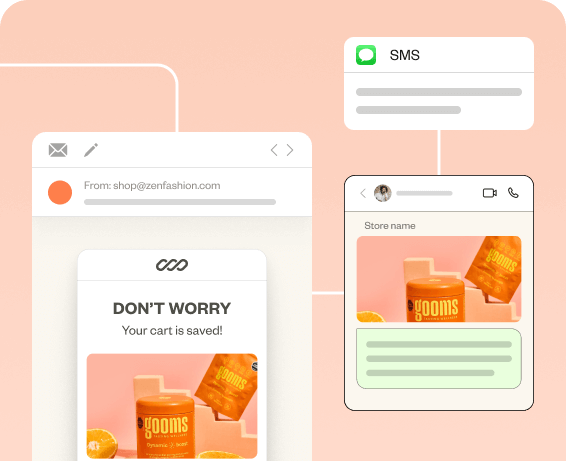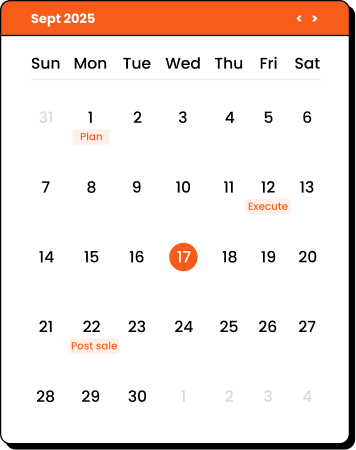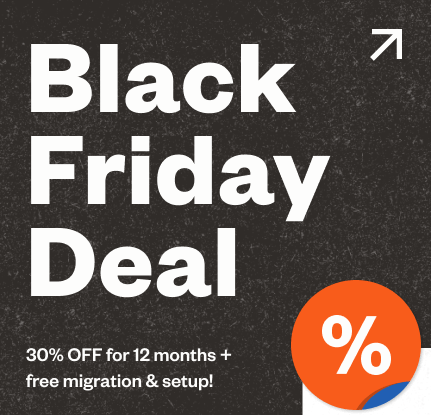Behavioral segmentation is the new shift in email marketing segmentation.
Email marketing has been solely based on demographic and geographical segmentation for decades, focusing primarily on a static customer profile.
But the same methods are not working anymore. Now, the focus is shifted to the customer’s behavioral pattern.
Our every search, click, purchase history, wishlist, and add to cart is taken into account in behavioral segmentation for sending personalized emails.
That’s why in this blog, we have discussed:
- Definition of Behavioral Segmentation in Marketing
- Benefits of Behavioral Market Segmentation
- Types of Behavioral Market Segmentation
- Best Behavioral Segmentation Examples in Email Marketing
Create behavioral segments with a few clicks using Retainful’s pre-built segmentation templates.
What is Behavioral Segmentation?
Behavioral segmentation is a marketing strategy that divides customers into distinct segments based on their behavioral patterns towards a business or a product.
These behaviors include purchasing frequency, engagement rate, type of product consumed, app/ website usage pattern, and the overall way they interact with a business.
Expert tip:
In addition to behavioral segmentation, consider the customer email marketing funnel stage of customers to segment more effectively.
Related Reading: Difference Between Email Segmentation and Personalization.
Top 5 Benefits of Behavioral Segmentation
Using behavioral segmentation in your email marketing strategy enables you to tailor emails with greater efficiency.
Here are the 5 behavioral marketing segmentation benefits:
- Personalization
- Improved marketing efficiency
- Higher ROI
- Increase customer retention
- Forecasting customer behavior
Start BFCM prep today, not November.
1. Personalization
Email personalization based on behavioral segmentation delivers a unique, tailored experience in each email.
Behavioral segmentation tracks specific user actions and behavior patterns, like searched products and engagement level, to segment.
- Searched products – Segmenting based on what your customers have searched and sending recommendations based on it will increase open rates and relevancy.
- Engagement level – Segmenting based on engagement level reveals what content resonates most with your audience, helping you tailor future emails for better response.
2. Improved Marketing Efficiency
Behavioral segmentation allows you to target which customer segments are most engaged, likely to convert, or at risk of churning based on their actions.
You can prioritize the most potential segments based on their behavior they exhibit.
As a result, your email marketing efficiency will increase manifold.
3. Higher ROI
Email marketing with behavioral segmentation will perform better as they are based on the customer’s behavior.
When customers receive promotions tailored to their behavior, like past purchases, wishlists, or cart activity, they’re far more likely to engage and convert.
With behavioral segmentation, your email marketing campaigns can achieve :
- More conversions.
- Higher Sales
- Quality leads.
- Retain customers effectively.
As a result, the overall ROI of your email campaigns increases.
Calculate the Return on Investment for your email campaigns and know how profitable your current email marketing tool is – ROI Calculator.
Pro tip: Continuously monitor email marketing metrics like open rates, click-through rates, and unsubscription rates to identify what works best for each customer’s behavior segments.
4. Increase Customer Retention
Behavioral market segmentation in email marketing can make customers feel understood and recognized at every point of interaction.
- Purchase Behavior – Send personalized thank-you notes for high-value buyers.
- Purchase Frequency – Offer exclusive deals to loyal and frequent shoppers.
Recognizing your loyal customers strengthens their connection with your brand, increasing CLV (Customer Lifetime Value) and customer retention.
5. Forecasting Customer Behavior
Behavioral segmentation provides a historical record of how different customer groups act in response to various emails(e.g., discounts, new product announcements).
Based on these data, you can identify patterns and trends to plan your future email marketing campaigns effectively.
4 Types of Behavioral Segmentation
There are 4 major behavioral market segmentation types based on the customer behavioral patterns towards your business.
- Segmentation based on purchase behavior and product usage
- Benefits-based segmentation
- Occasion or timing-based segmentation
- Customer loyalty-based segmentation
1. Purchase and Product Usage Behavior
Purchase behavior segmentation groups customers based on their buying habits, such as frequency of purchases, average order value, and time since last purchase.
On the other hand, product usage segmentation groups customers by how they interact with the products they’ve bought, including features used, frequency of use, and duration of use.
You can use the RFM method to identify customer’s purchase and product usage behavior patterns.
- Recency – How recently has the customer purchased from you?
- Frequency – How often customers purchase from your store.
- Monetary Value – The total amount spent at your store within a specific period.
Recency
Purchase Behavior:
- Recent buyers are more likely to purchase again.
- If someone hasn’t bought in a while, send a re-engagement email.
Product Usage Behavior:
- A recent purchase of regular use products (eg, supplements) means they’re still using them.
- A long gap may mean they’ve stopped and could churn.
Frequency
Purchase Behavior:
- Frequent buyers are loyal and engaged.
- Infrequent buyers might need discounts or special offers to come back.
Product Usage Behavior:
- Frequent users depend on the product, offer subscriptions, or bulk deals.
- Less frequent users may need reminders or helpful content to increase their usage.
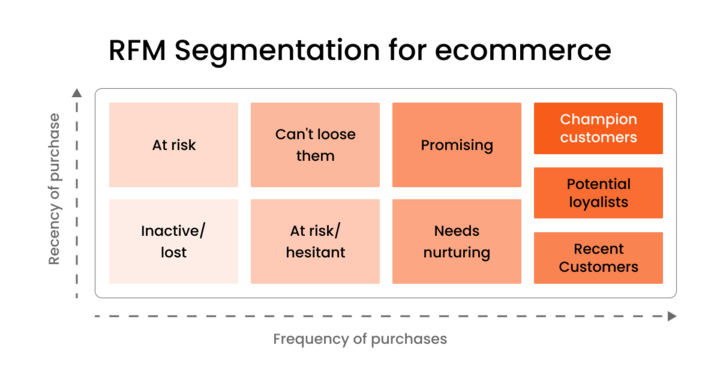
Monetary Value
Purchase Behavior:
- Big spenders are high-value customers who may prefer premium options.
- Low spenders might be casual or budget-conscious shoppers.
Product Usage Behavior:
- High spenders may use the product often or buy in bulk.
- Encourage low spenders with upsells, bundles, or cross-sells.
2. Benefits-based Behavioral Segmentation
In benefits-based behavioral market segmentation, customers make purchasing decisions based on the specific benefits a product or experience offers them.
In the case of a product, not every customer will buy the product for the same reason.
For example, let’s consider a mobile phone. Some people buy a phone because they trust the brand. In contrast, others choose it for a specific feature, like camera quality or battery life.
If we consider experience, an introvert will prefer a restaurant with minimal human interactions. To them, rather than the food or price, a restaurant experience with minimal human presence is their selling point.
3. Occasion or timing-based behavioral segmentation
Occasion or timing-based segmentation will help you to identify customers who are purchasing on occasions or specific time of the year regularly.
- Recurring personal events like birthdays or wedding anniversaries, you’ll probably buy something special each time these roll around every year.
- Big, one-time personal events like buying a wedding gown for yourself are usually a one time purchase.
- Holidays everyone celebrates, like Christmas or St. Patrick’s Day, people tend to buy gifts and festive items for these holidays every year. Target them with special discount emails for these holidays to increase sales.
4. Customer loyalty based on behavioral segmentation
According to multiple studies, it costs five times more to acquire a new customer than to retain an existing one. That’s why marketers focus on customer retention and user status.
Here are the behavioral parameters based on which you can do customer loyalty-based segmentation:
- Purchase Frequency
- Participation in loyalty programs
- Engagement Rates
- Purchase Value
- Customers who recommend your products
Pro tip: Segment customers who are in the loyalty stage and advocacy stage in your marketing funnel. Sending them discount emails with referral and affiliate links will bring in new customers and increase sales.
Discover multiple segmentation types in one place at Retainful and launch your tailored email campaigns in minutes.
Related Reading: 9 Post-Purchase Email Examples That Retain Customers.
Top 6 Behavioral Segmentation Examples
We have curated a list of the best behavioral segmentation examples used by well-established brands. Moreover, we have explored how they have used behavioral market segmentation in their e-commerce email marketing.
1. Apple Behavioral Segmentation
This Apple behavioral segmentation example targets multiple behavioral patterns to cater to a wide range of audiences.
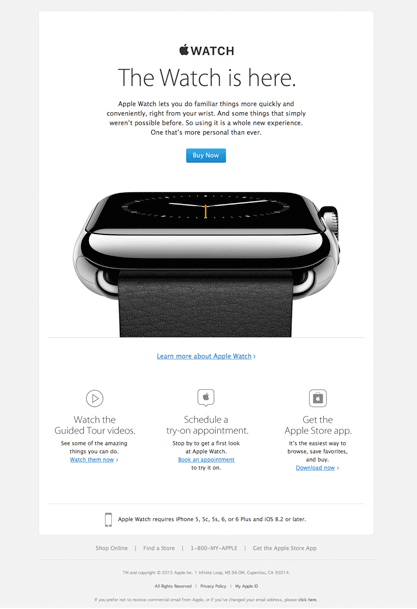
Let’s take a look at the behavior segmentation type used in this example:
Usage-Based Behavioral Segmentation
- Apple highlights how the watch improves daily tasks and offers new experiences appealing to users interested in convenience and technology.
Benefit-Based Behavioral Segmentation
- The messaging focuses on the benefits – personalization and ease of use– appealing to users looking for a more connected and efficient lifestyle.
Loyalty-Based Behavioral Segmentation
- The mention of iPhone compatibility (iPhone 5 and later) suggests, they are targeting existing Apple users who may be more likely to adopt the watch.
2. Amazon Behavioral Segmentation
Amazon cleverly uses two core behavioral patterns to personalize its thank-you message to new customers.

Let’s take a look at the behavior segmentation type used in this example:
Product usage based behavioral Segmentation
- The section “Meet the Family of Amazon Devices” suggests that Amazon is identifying potential interest and usage in tech products based on the first purchase.
Benefits-Based Behavioral Segmentation
- The email highlights the benefits that come with a purchase: Amazon Prime, the Amazon App, and the Subscribe & Save program.
Additionally, Amazon segments this customer as a new customer and provides helpful features in the thank you email to ease the shopping experience.
3. Nike Behavioral Segmentation
Nike’s birthday email for members blends loyalty and purchase-based behavioral insights to create a personalized experience. This way, Nike strengthens customer relationships and retains loyal customers.

Let’s take a look at the behavior segmentation type used in this example:
Occasion-Based Segmentation
- Nike recognizes the customer’s birthday and offers a special discount as a gift, encouraging engagement and purchases.
Loyalty-Based Segmentation
- The email thanks the customer for being part of the Nike community, strengthening the brand-customer relationship.
Purchase Behavior Segmentation
The discount is strategically placed for customers likely to purchase with incentives, nudging them toward conversion.
Related Reading: 15 Best Email Marketing Examples For 2025.
4. Adidas Behavioral Segmentation
This Adidas email uses different behavioral segmentation categories to connect with different customer preferences during a store reopening event.
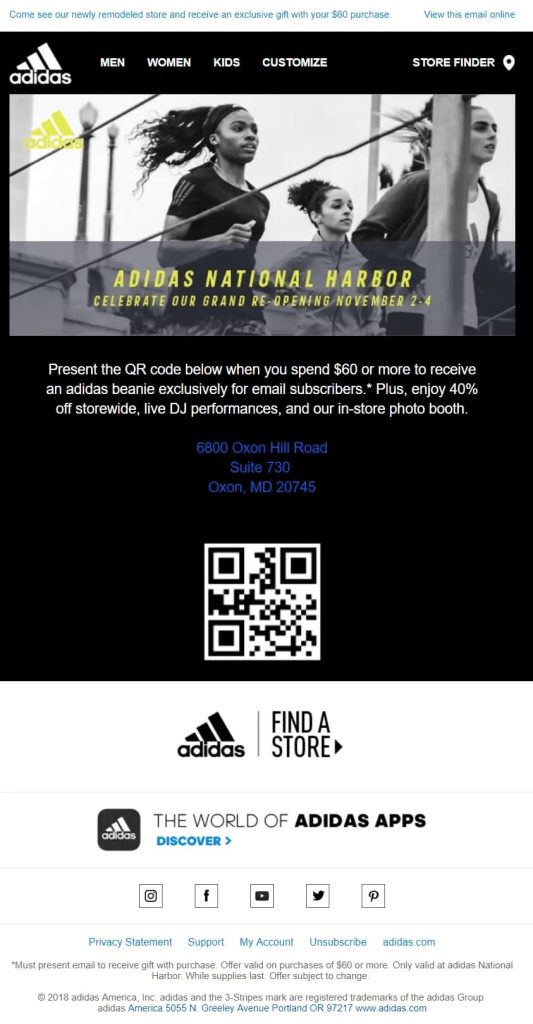
Let’s take a look at the behavior segmentation type used in this example:
Occasion-Based Behavioral Segmentation
- The email promotes the grand reopening of the Adidas National Harbor store, targeting customers who shop during special store events.
Purchase Behavior Segmentation
- The offer of 40% off appeals to deal-seeking customers who are motivated by discounts and promotions.
Experience-Based Segmentation
- The email includes a QR code for in-store redemption, targeting customers who prefer in-person shopping experiences.
Benefits-Based Segmentation
- The live DJ performances and in-store photo booth add experiential value, attracting customers who seek more than just a transaction.
5. Starbucks Behavioral Segmentation
In this example, Starbucks uses a mix of loyalty, purchase, and benefit-based segmentation to connect with customers on Valentine’s Day.

Let’s take a look at the behavior segmentation type used in this example:
Occasion-Based Segmentation
The email is themed around Valentine’s Day, targeting customers who are likely to purchase seasonal treats for themselves or their loved ones.
Purchase Behavior Based Segmentation
- It promotes specific items like Cherry Mocha drinks, heart-shaped cookies, and red velvet cake, appealing to customers who enjoy Starbucks’ limited-time offerings.
- The “Happy Hour at 3 PM” message appeals to customers who frequently visit Starbucks during promotional hours.
Loyalty-Based Behavioral Segmentation
The mention of Starbucks Rewards and its Visa Card encourages engagement from loyal customers who earn benefits for their purchases.
Benefit-Based Behavioral Segmentation
The eGift card option targets customers looking for a quick, hassle-free way to send a Valentine’s gift.
6. Netflix Behavioral Segmentation
Netflix’s behavioral segmentation uses a subscriber’s viewing history to provide personalized recommendations. This way, Netflix can enhance the user experience. As a result, the customer retention rate also increases.
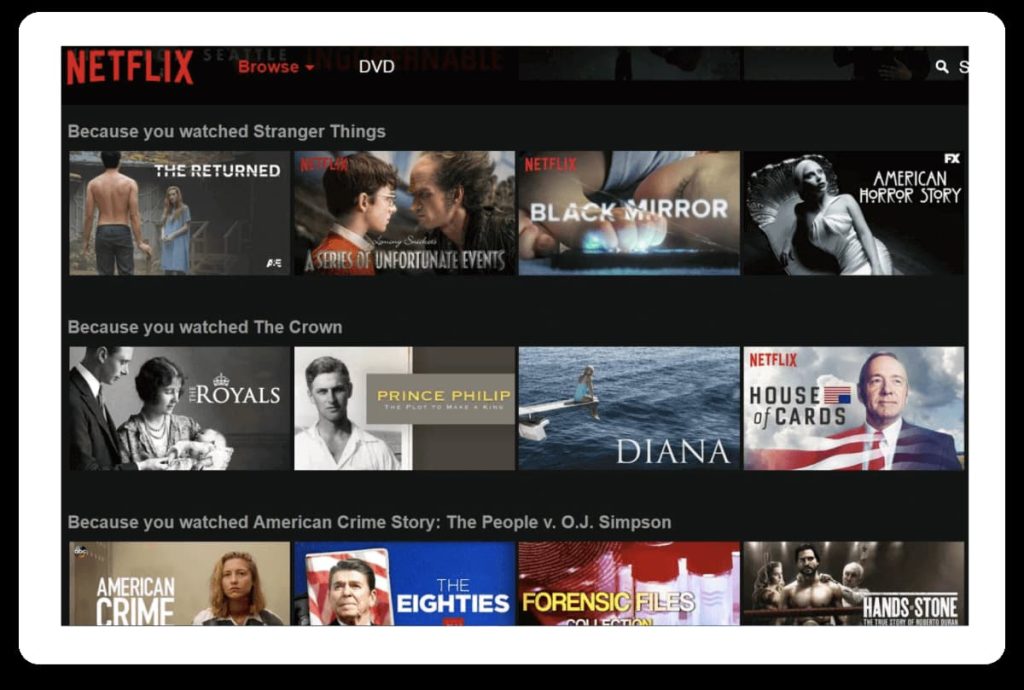
Let’s take a look at the behavior segmentation type used in this example:
Usage Behavior-Based Segmentation
- Subscribers who frequently engage with crime stories are shown true crime and investigative series.
Loyalty-Based Behavioral Segmentation
- Netflix keeps loyal subscribers engaged by offering continuous content discovery, ensuring they always have something to watch, and reducing churn.
Benefit-Based Behavioral Segmentation
- Personalized recommendations highlight the benefit of convenience. Users don’t have to search for new content; Netflix curates it for them based on their behavior.
What to Look for in a Behavioral Segmentation Tool
When choosing an email segmentation tool for behavioral segmentation, look for these key features:
- Advanced Segmentation Filters: Ability to segment your email list based on purchase history, browsing behavior, engagement levels, and past interactions.
- Real-Time Data Tracking: Tracks customer actions like email opens, clicks, abandoned carts, and product views.
- Dynamic Segments: Automatically updates segments based on customer behavior and lifecycle stage.
- Automated Workflows: Enable automated campaigns triggered by customer’s behavior and actions (e.g., abandoned cart, repeat purchases).
- Personalization & Dynamic Content: Allows email personalization based on customer behavior and preferences.
- Performance Analytics & Reporting: Provides insights into segment engagement, conversions, and retention rates.
A tool like Retainful excels in behavioral segmentation by offering dynamic audience targeting, automated workflows, and personalized email triggers.
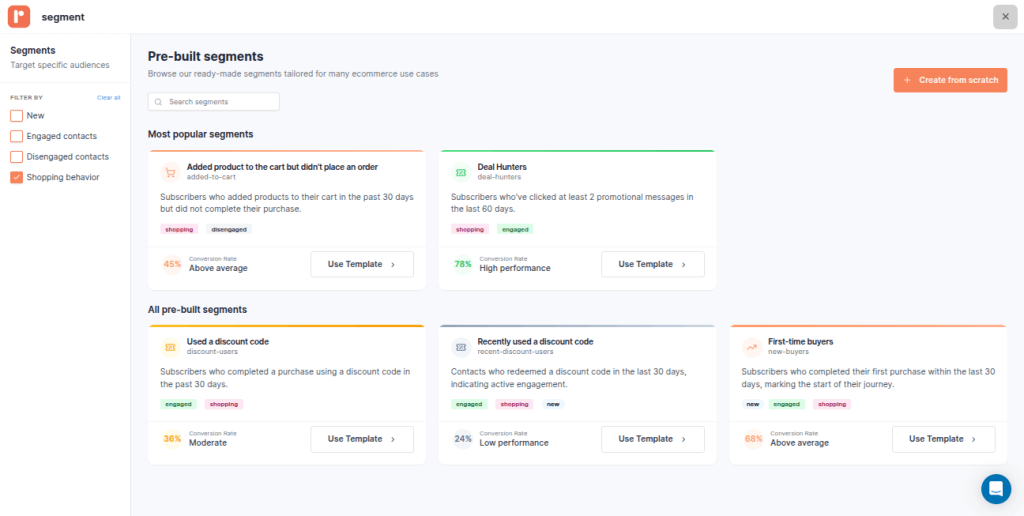
Related Reading: Shopify post-purchase email: How to Automate + Examples
Segment smarter with Retainful’s advanced and easy-to-use segmentation tools to increase your campaign’s success rate.
Summary
Geographic and demographic segmentation rely on relatively static data. In contrast, behavioral segmentation focuses on dynamic factors like evolving needs, brand interactions, and purchasing patterns.
Behavioral market segmentation variables include:
- Purchase and usage behavior
- Customer’s purchasing value and frequency
- Buyer’s marketing funnel stage
- User’s status, like Active, inactive, or churned
- Customer’s loyalty towards the brand
- Occasional and seasonal buyers
- Benefits sought by buyers
You may think email segmentation with these many variables is too much effort. The benefits behavioral segmentation brings in make this effort worth it.
The importance of behavioral segmentation is that it paves the way for better understanding of customer’s buying patterns and what the primary selling benefit is.
With behavioral segmentation, businesses can forecast and plan effective email marketing campaigns that yield the highest ROI.
Also Read:
- The 11 Best Email List Building Tools To Increase Conversions
- 8 Great Re-engagement Email Examples to Reactivate Customers
- Customer Lifecycle Marketing – Strategies for Each Stage + Examples
Frequently Asked Questions
Behavioral segmentation helps businesses deliver personalized marketing by targeting customers based on their actions, preferences, and engagement levels.
Behavioral segmentation focuses on customer actions, including purchase behavior, brand interactions, usage patterns, and engagement levels.
Usage rate segmentation categorizes customers based on how frequently they use a product or service, such as heavy users, moderate users, and light users.
A Starbucks Rewards member who consistently buys coffee to earn points and redeem free drinks demonstrates behavioral loyalty, as their repeat purchases are driven by incentives.
Amazon recommends products based on browsing history and past purchases, using behavioral segmentation to personalize shopping experiences.
Occasion segmentation targets customers based on specific events such as holiday shopping or seasonal promotions, to encourage timely purchases.
Netflix uses behavioral segmentation by analyzing viewing history, watch frequency, and genre preferences to recommend personalized content.

